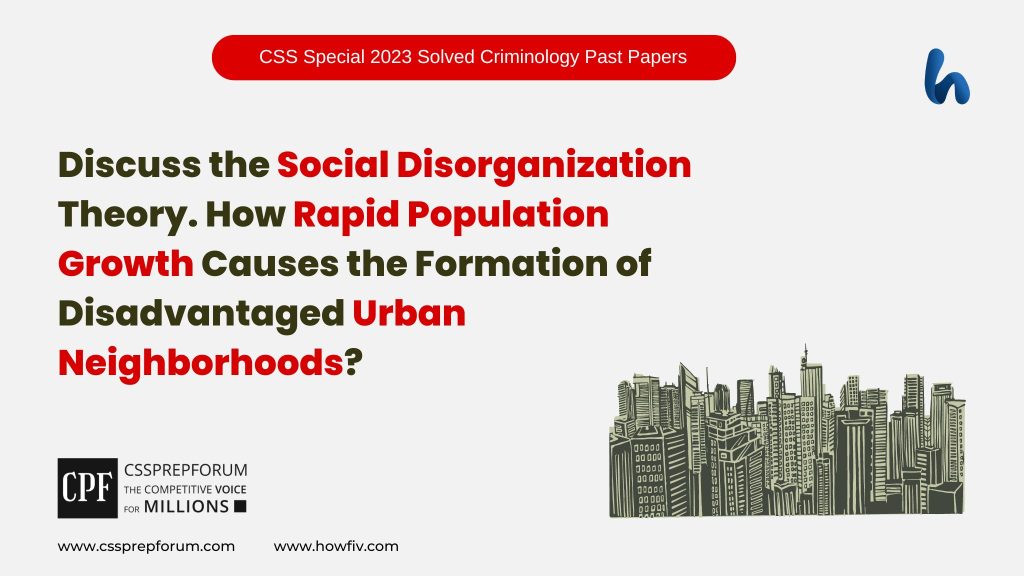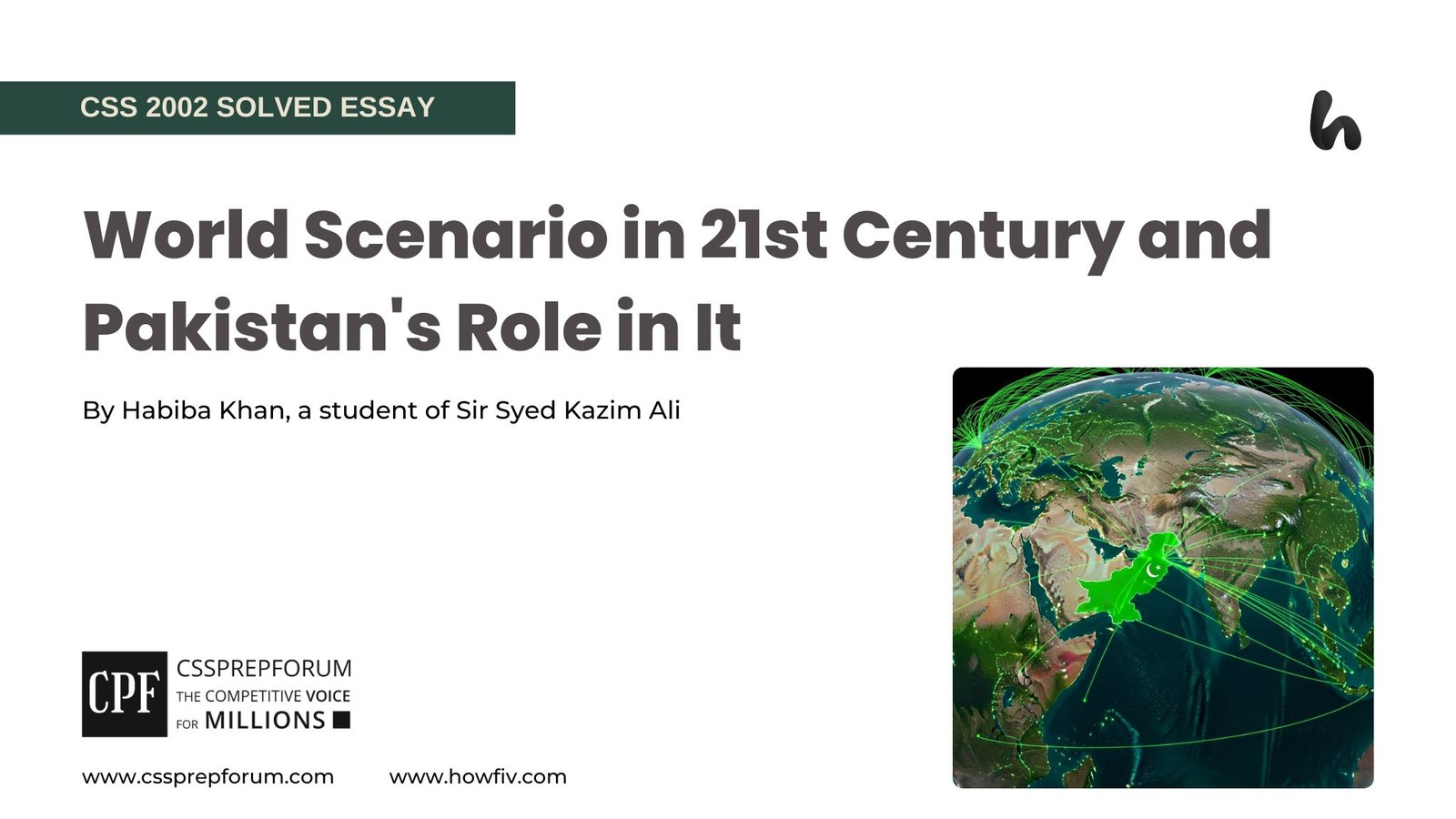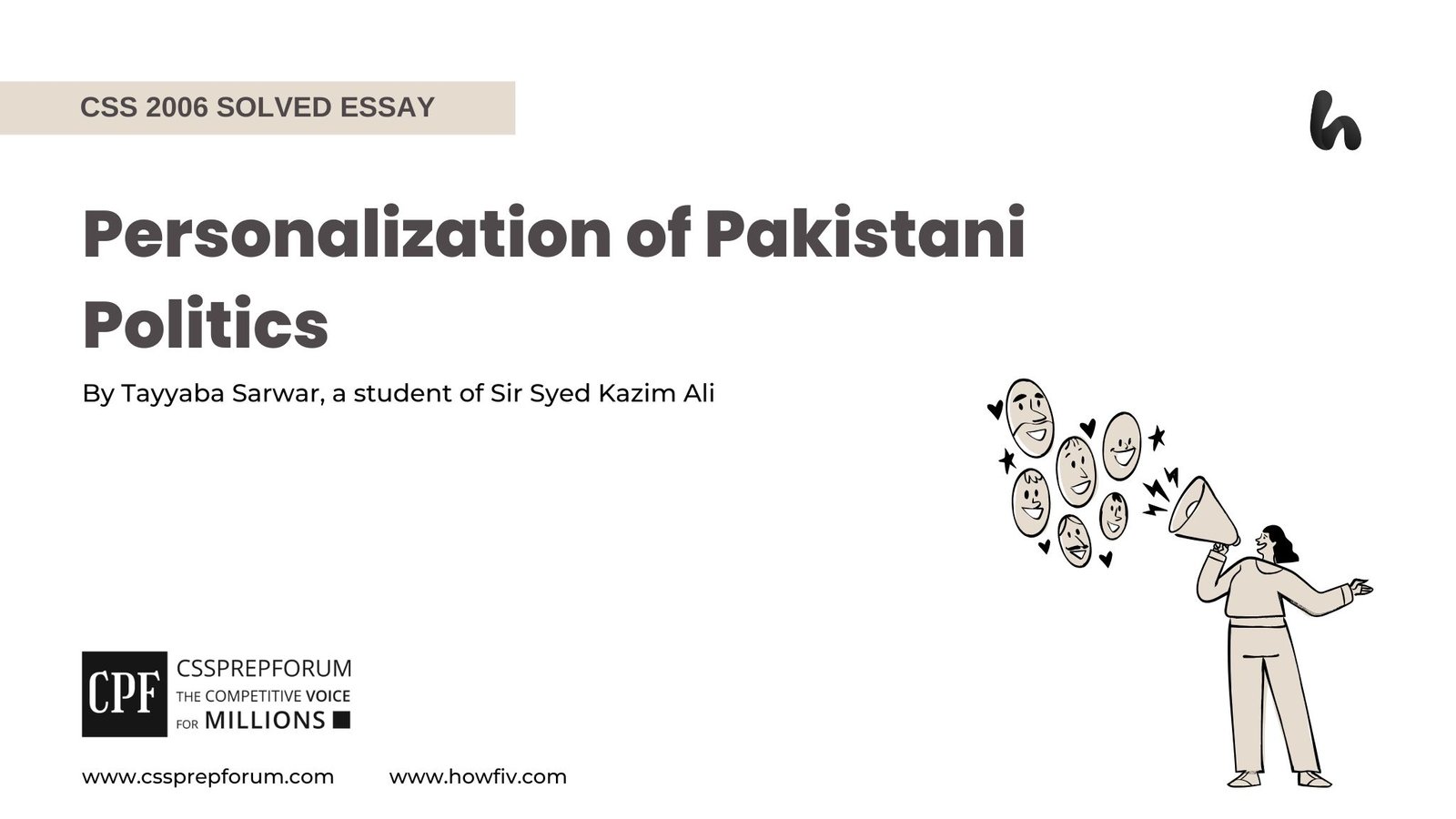CSS Solved Criminology Past Paper CSS Special 2023 | Social Disorganization Theory, Population Growth, Urban Neighborhoods

Question Breakdown
In this question, the examiner has asked the aspirants to give a detailed explanation of Social Disorganization Theory. The question has two main parts: a discussion on social disorganization theory and explaining the formation of disadvantaged urban neighbourhoods due to rapid population growth. To make the answer outstanding, one can add scholarly definitions, examples, particularly from Pakistan, and various theories linked with it. Despite this, one ought to explain the rapid growth in population causing the formation of disadvantaged urban neighbourhoods through the lens of social disorganization theory. Moreover, the quality of the answer can be accentuated by adding diagrams, relevant quotations, and flow charts.
Outline
1- Introduction
2- Social Disorganization Theory
3- Rapid Population Growth Causing the Formation of Disadvantaged Urban Neighborhoods
- ✓Increased Populace in Urban Areas
- ✓Low Urban Planning
- ✓Inadequate Infrastructure
- ✓Economic Issues
- ✓Residential Mobility
4- Remedial Measures to Address Social Disorganization
5- Critical Analysis
6- Conclusion

Answer to the Question
Introduction
In the early twentieth century, the renowned sociologists Clifford Shaw and Henry McKay presented the Social Disorganization Theory. This theory explains the relationship between urban environment and criminal behavior. Furthermore, the causes of increased crime rates in certain localities are highlighted in this theory of criminology. According to this theory, the ability of a community to sustain social order as well as adhere to societal standards and norms is considerably swayed by both structural and environmental factors. Despite this, the theory explicitly suggests that crime rates are increasing because of the rapid increase in urbanization, and the population is deteriorating communal relationships along with social integration, thus establishing impoverished areas. In developing countries like Pakistan, swift urbanization is a pertinent issue because huge metropolitan centres are characterized by inadequate infrastructure, economic disparity, and social disintegration.
“Most poverty and suffering – whether in a country, a family or a person – flows from disorganization.” – David Brooks
Social Disorganization Theory
A sociological and criminological theoretical perspective, known as Social Disorganization Theory, explains the reasons behind increasing criminal activities in certain localities as compared to others. In 1897, the theory was originally put forth by Emile Durkheim. Later on, Clifford Shaw and Henry McKay presented their notions in 1942. Emile Durkheim, in his book “Suicide, Division of Labor, Social Facts”, delineated disorganization, normlessness, and lawlessness – along with the disruption in the smooth functioning of society. In Chicago School, Clifford Shaw and Henry McKay presented the theory which states
“Crime and deviance are a byproduct of both the physical environment and social structure, and the way in which they interact and are organized can be studied through an ecological framework.”
Instead of focusing on people, Shaw and McKay accentuated the importance of the pathology of various locations. They argued that the reasons behind the increased crime rate encompass urbanization, industrialization, poverty, and the expansion of cities. According to the theory, social disorganization—defined as the incapacity of a community to achieve shared objectives and find solutions to persistent issues—can result from specific neighbourhood attributes, including poverty, residential instability and racial heterogeneity. As a result, the social disorder makes it difficult for law enforcement in an area to control the public behaviour of its natives and raises the likelihood of criminal activity.

Rapid Population Growth Causing the Formation of Disadvantaged Urban Neighborhoods
In Pakistan, cities are expanding quickly because of the substantial increase in urbanization and population growth. Increasing populations have resulted in the decrease of essential resources and infrastructure, thus causing the establishment of impoverished urban districts, particularly in big cities like Lahore, Karachi, and Islamabad.

Increased Populace in Urban Areas
According to the Social Disorganization Theory, social relationships and collective efficacy are gradually abraded due to dilapidated and overpopulated housing in urban areas. Furthermore, the conflict is exacerbated, and the capacity for self-regulation withers away from the community because of the competition over limited resources. In Karachi, the swift increase in population has resulted in the emergence of “Katchi Abadis”, or informal settlements, where people often live in houses of below an average standard without fundamental amenities. In a journal article titled “Informal Settlements and Urban Poverty in Karachi”, N. Ahmed delineates that such informal settlements are hotspots for criminal activities because these are densely populated and socially disorganized.
Low Urban Planning
Due to rapid urbanization and rampant corruption, political interference, lack of effective implementation of policies, and weak institutions, there has been low urban planning in Pakistan, leading to the creation of disadvantaged neighbourhoods in urban areas. They have also resulted in the formation of slums and caused environmental degradation. Ernest Burgess gave the concept of interactions of humans attaining personal goals and ignoring the common good, such as the preservation of the environment. For instance, Karachi is home to several informal settlements, particularly in Lyari and Orangi Town. Moreover, unplanned industrial growth and deforestation in Lahore have led to environmental degradation, pollution, and contamination of water bodies.
Inadequate Infrastructure
Inadequate infrastructure and social services, such as insufficient leisure centres, healthcare facilities, and educational programs, can worsen social disarray. Lack of these services can worsen stress levels and lower quality of life, further eroding social cohesiveness. Rapid urbanization in Peshawar has put a burden on public services, especially in lower-class areas. Inadequate healthcare and educational resources raise the likelihood of juvenile delinquency and contribute to social instability.
Economic Issues
Despite exacerbating stress and strain amongst people, economic hardships, financial constraints, and lack of employment opportunities also result in social disintegration. Due to unemployment, people become frustrated, which ultimately results in aggression and violence, thus engaging them in criminal behaviour. When people are struggling to deal with social strain and discrimination, then, according to the Concentric Zone Model, significant crimes occur in the transitional zone where new immigrants reside.
To illustrate, in Lahore, especially, places in the inner city have increased crime rates because of unemployment and poverty. M. Hussain, in his article titled “Economic Deprivation and Crime in Lahore”, suggests that natives feel more deprived as a result of the absence of economic prospects, which gradually minimizes social cohesiveness and makes them more susceptible to criminal activity.
Residential Mobility
According to the Cultural Transmission Theory, every behaviour is learned by individuals from their surroundings, and cities operate like human organisms; thus, social and cultural changes become a cause of crime. Moreover,increased migration gradually destroys social networks and diminishes informal social control, adversely impacting the stability of communities. Despite this, populations residing temporarily in these areas do not actively participate in community activities, and the well-being of the community is not their foremost concern.
For instance, some neighbourhoods in Islamabad, particularly those with a strong migrant worker population, find it difficult to uphold social order. Moreover, due to the influx and exit of citizens from urban areas, establishing strong and socially integrated communities has become a troublesome task. As a result, a rapid increase in crime rate is being envisioned in urban areas.
Remedial Measures to Address Social Disorganization
Four elements of disorganization, encompassing broken families, overpopulation and poverty, diverse ethnic groups, and low-income slum areas, were presented by Sampson and Groves in 1989 through their model of social disorganization. Therefore, in order to deal with these issues causing social disorganization, formulating robust strategies to ensure economic stability, development, and social control are paramount. Investing money into community development projects that raise the standard of housing, upgrade public facilities, and offer necessities can increase social cohesiveness and group productivity.
Moreover, economic measures that boost regional companies and draw investment can create jobs, ease the burden on the economy, and enhance social stability. In addition to this, improving access to recreational, medical, and educational resources can raise living standards and lower the likelihood of crime and delinquency. Furthermore, establishing informal social control and building confidence between the community and law enforcement are two benefits of putting community policing tactics, which include residents in attempts to reduce crime, into practice. Fostering civic engagement via community groups and local governance endeavours can also enable inhabitants to participate in upholding social order and tackling local concerns actively.
Critical Analysis
The ‘Social Disorganization Theory’ by Emile Durkheim, Clifford Shaw and Henry McKay explains that poverty, urbanization, and industrialization have caused an increase in crime rate. Various other theorists like John Burton and Robert Tedd Gurr also mention poverty as a reason for crime and violence in their theories titled ‘Human Needs Theory’ and ‘Relative Deprivation Theory’, respectively. When human beings are deprived of fundamental resources for survival or are poverty-stricken, they become frustrated and aggressive. Thus, in order to fulfil their needs, they adopt illegitimate means to achieve their objectives. According to Strain Theory by Robert K. Merton, innovation and retreatism are some of the various modes of adaptation to overcome strain in which people reject the legitimate means defined by society to achieve certain objectives. Nonetheless, poverty, overpopulation, industrialization, etc., are not the only reasons for crime. There can be various psychological or biological causes of crime as well. For instance, according to the book “The Criminal Man” written by Lombrosso in 1876, criminals can be distinguished from law-abiding citizens on the basis of physical characteristics. Moreover, Charles Goring puts forth in “The English Convict” in 1913 that criminal behavior is transferred from one generation to another.
Conclusion
“Neighborhoods characterized by poverty, residential instability, and racial and ethnic heterogeneity have a higher rate of delinquency because they lack the social cohesion necessary to control and regulate behaviour.” – Clifford R. Shaw and Henry D. McKay
To cap it all, social disorganization theory delineates that the crime rate increases due to disruption of the proper functioning of society, poverty, urbanization and industrialization. Moreover, the theory explains how rapid population increase might result in the development of impoverished urban districts. In many urban regions of Pakistan, social disarray has been exacerbated by the country’s expeditious urbanization and population growth. Comprehensive policies that promote civic involvement, economic opportunity, social service quality, and community development are crucial to address these issues. Through enhancing social cohesiveness and group productivity, communities can lessen the adverse effects of swift population expansion and foster communal harmony.

CSS Solved Past Papers’ Essays
Looking for the last ten years of CSS and PMS Solved Essays and want to know how Sir Kazim’s students write and score the highest marks in the essays’ papers? Then, click on the CSS Solved Essays to start reading them.
CSS Solved Essays
CSS Solved General Science & Ability Past Papers
Want to read the last ten years’ General Science & Ability Solved Past Papers to learn how to attempt them and to score high? Let’s click on the link below to read them all freely. All past papers have been solved by Miss Iqra Ali & Dr Nishat Baloch, Pakistan’s top CSS GSA coach having the highest score of their students. General Science & Ability Solved Past Papers












